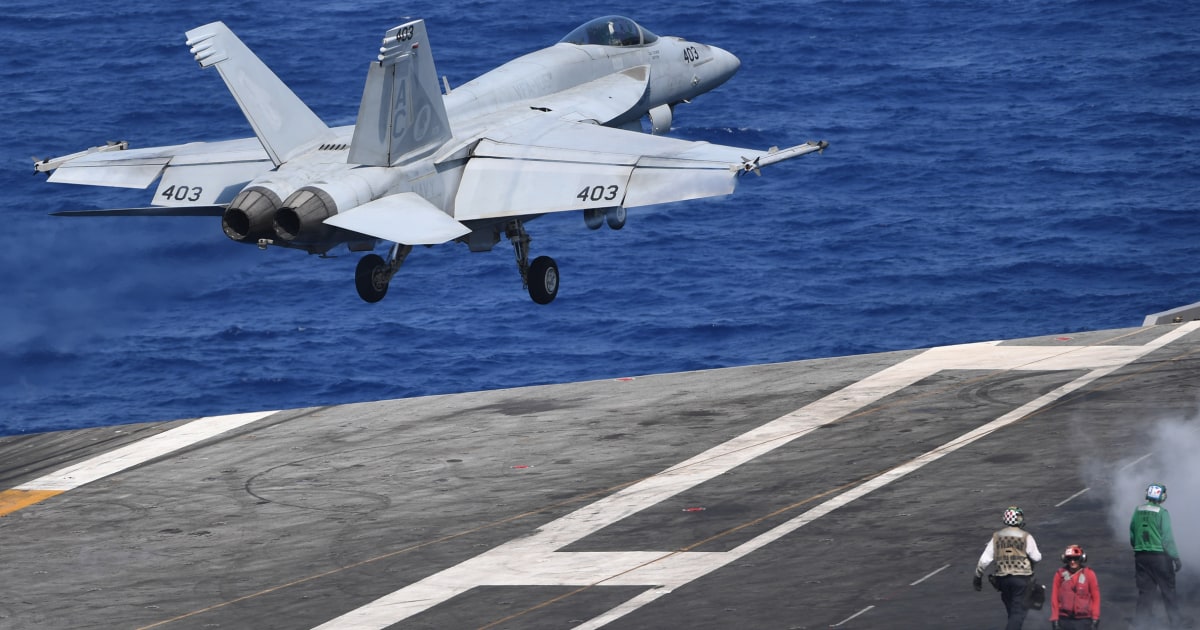The pilots aboard a nuclear-powered aircraft carrier find themselves facing a new and challenging mission in the Red Sea: protecting commercial shipping. Navy Lt. Cmdr. Travis Keating, a F/A-18 Super Hornet pilot, admits that their training didn’t prepare them for this task initially. However, he remains optimistic, highlighting their ability to adapt to evolving missions.
Recently, a joint U.S.-U.K. mission targeted Iranian-supplied ballistic missiles and drones used by Houthi forces to attack cargo ships. This operation, which included airstrikes and missile launches from U.S. destroyers, aimed to deter further attacks. Despite the success of the mission, Houthi militants remain defiant, linking their actions to events in the Gaza Strip.

Navigating Challenges: U.S. Carrier Pilots Protecting Shipping in the Red Sea (Credits: Department Of Defense)
Navy Capt. Marvin Scott, Commander of Carrier Air Wing Three, emphasizes the continuous planning efforts to counter Houthi threats effectively. While airstrikes have been effective, the outcome of these actions in halting Houthi attacks remains uncertain, given their resilience and experience in withstanding such assaults.
The pilots operate without ground support in Houthi-controlled areas, a departure from previous missions in the Middle East. Their tasks extend beyond airstrikes to defending the naval flotilla, aiding threatened vessels, and reassuring civilian navigation in the Red Sea.
Mission preparations, lasting up to 12 hours, involve thorough briefings and intelligence assessments to ensure mission success and safety. Despite the intensity and risks, pilots like Keating remain focused on their duties, constantly learning and refining tactics to improve future operations.
The pilots aboard the aircraft carrier navigate complex challenges in the Red Sea, adapting their skills to safeguard commercial shipping and respond to evolving threats. Despite uncertainties, their commitment to mission success and continuous improvement remains unwavering.























